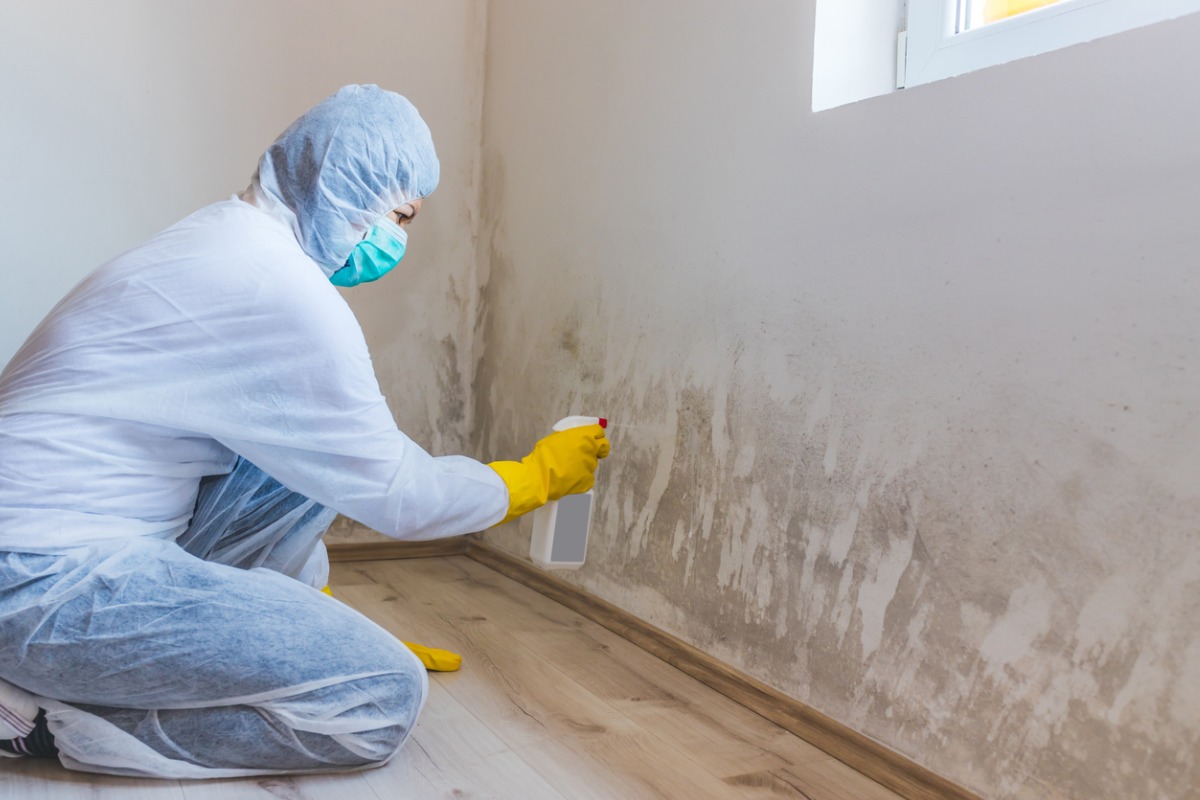Mold is a common household issue that can quickly become a serious problem if not properly addressed. Found in damp, humid areas such as basements, bathrooms, and attics, Mold Remediation Near me can spread quickly on a variety of surfaces including walls, ceilings, and flooring. The term "mold remediation" refers to the process of removing mold and preventing it from returning. But the question many homeowners and property managers ask is—does mold remediation actually work?

Understanding Mold Remediation
Before evaluating the effectiveness of mold remediation, it's important to understand what the process entails. Mold remediation goes beyond simple cleaning. It involves identifying the source of moisture that caused the mold to grow in the first place, containing the affected area, removing mold-infested materials, and treating the area with specialized solutions to inhibit future growth.
The process typically includes:
-
Inspection and Assessment: Professionals conduct a thorough inspection using moisture meters and other tools to locate the mold and its source.
-
Containment: The affected area is sealed off to prevent mold spores from spreading during the removal process.
-
Air Filtration: HEPA filters are used to capture airborne spores, improving air quality during remediation.
-
Mold Removal and Cleaning: Contaminated materials such as drywall, insulation, or carpet may be removed. Surfaces are cleaned and treated with antimicrobial agents.
-
Drying and Dehumidification: Moisture control is essential. Remediation includes drying out the area and resolving underlying moisture issues.
-
Final Inspection: Once the work is complete, a final evaluation ensures that the space is mold-free.
The Effectiveness of Mold Remediation
When performed correctly by trained professionals, mold remediation is highly effective. The key to successful remediation lies in addressing both the mold and the environmental conditions that allow it to thrive. If only surface mold is cleaned without eliminating the source of moisture, the mold is likely to return. Therefore, a comprehensive approach is essential.
Long-Term Results
Many property owners notice a significant and lasting improvement following a professional remediation. Once the underlying moisture problem is resolved—whether it's a leak, poor ventilation, or excessive humidity—mold does not typically return. High-quality remediation includes sealing and repairing affected areas, improving airflow, and offering recommendations for ongoing maintenance.
Professional Techniques vs. DIY
While some individuals attempt to handle mold themselves using household cleaners, this approach may not provide lasting results. Mold can infiltrate porous materials like drywall and wood, making it difficult to eliminate without the proper tools. Professionals use industry-grade equipment, including negative air machines and antimicrobial treatments, which are far more effective than standard cleaning methods.
Additionally, experts are trained to identify hidden mold. It's not uncommon for mold to grow behind walls or beneath flooring—places an untrained eye might miss. By locating and addressing all affected areas, remediation professionals can ensure a more thorough and effective treatment.
Preventing Mold from Returning
One of the most important aspects of remediation is the prevention of future outbreaks. Professionals not only remove the existing mold but also take steps to ensure it doesn't return. Preventative measures may include:
-
Installing dehumidifiers or improving ventilation
-
Repairing water leaks
-
Applying mold-resistant coatings
-
Educating homeowners on proper moisture control
By following through with these steps, the likelihood of mold returning is drastically reduced.
Real-World Success Stories
Numerous case studies and customer testimonials affirm the effectiveness of mold remediation. Homeowners report that not only does the visible mold disappear, but persistent musty odors and respiratory symptoms often improve following remediation. In commercial buildings, remediation has helped businesses return to full operation without mold-related disruptions.
When to Seek Mold Remediation
Mold remediation is best sought when you notice any of the following:
-
Visible mold growth
-
Persistent musty smell
-
Water damage or leaks
-
Health symptoms like coughing, sneezing, or congestion that worsen indoors
Timely intervention is important. The longer mold is allowed to spread, the more difficult and extensive the remediation process becomes.
Why Mold Remediation Works
The reason mold remediation works is that it combines scientific understanding of mold behavior with technical expertise and specialized equipment. The goal isn't just to clean but to correct the environment that allowed mold to thrive. By treating the root cause—moisture—along with removing the mold itself, remediation delivers long-term solutions.
Furthermore, remediation is guided by standardized protocols established by organizations like the Institute of Inspection Cleaning and Restoration Certification (IICRC). These guidelines ensure that technicians follow best practices and safety measures to achieve effective and consistent results.
Conclusion
So, does mold remediation actually work? The answer is a resounding yes—when done properly by trained professionals. Mold remediation is not just about wiping down visible mold but about tackling the deeper issues that allow it to grow. Through thorough assessment, strategic removal, and preventative measures, mold remediation has proven itself to be an effective solution for restoring and maintaining a healthy indoor environment.
Whether you're dealing with a small patch in a bathroom or a more widespread problem in a basement, professional mold remediation offers a reliable path to a mold-free space. By investing in a thorough process that includes detection, removal, and prevention, you can feel confident that mold won't be an ongoing concern in your home or property.






